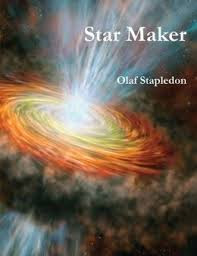We might make a fourfold distinction:
Heinleinian and early Andersonian future histories;
later Andersonian future histories;
Wellsian and Stapledonian future histories;
Stapledonian cosmic history.
This list is conceptual, not chronological.
The basic distinction is that a Wellsian/Stapledonian future history is:
(i) not a series but a single work;
(ii) not a novel with characters and conversations but a fictitious historical text book.
Thus, we read about the Norman Conquest in a History of England and about Martian invasions of Earth not only in a novel by Wells but also in a future history by Stapledon.
Stapledon's future history covers not just a historical period but the entire future of humanity while his Star Maker summarizes the evolution of consciousness in the cosmos. What has this to do with Poul Anderson? Quite a lot:
Anderson modeled his first future history on Heinlein's;
Anderson's second future history grew into the Heinlein model without pre-planning;
Anderson's last two future histories are respectively a tetralogy and a novel - thus, neither is a series of shorter works;
Anderson's last future history synthesizes Heinleinian future history with Stapledonian cosmic history because some of its chapters are set in future periods whereas others describe cosmological processes.

No comments:
Post a Comment